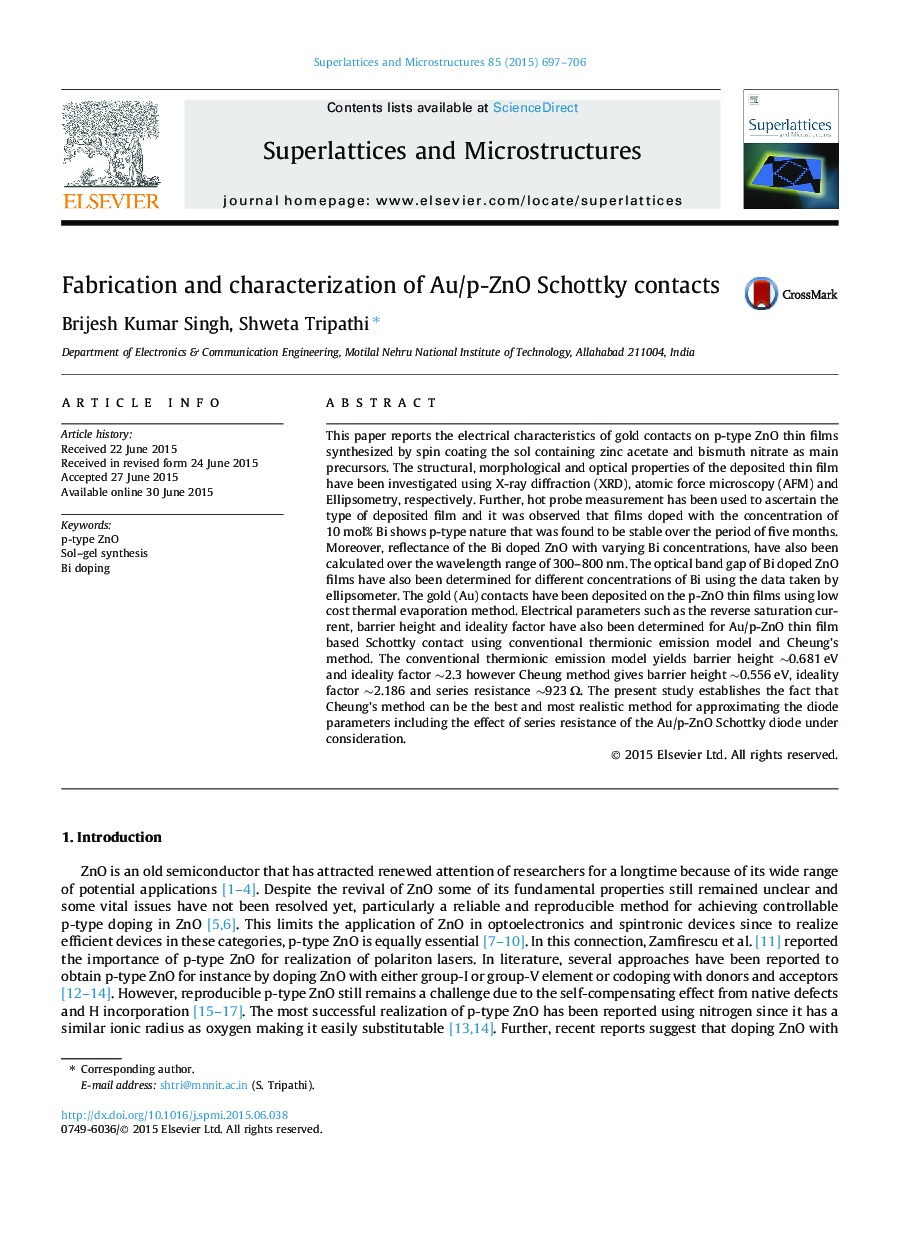| Article ID | Journal | Published Year | Pages | File Type |
|---|---|---|---|---|
| 1553056 | Superlattices and Microstructures | 2015 | 10 Pages |
Abstract
This paper reports the electrical characteristics of gold contacts on p-type ZnO thin films synthesized by spin coating the sol containing zinc acetate and bismuth nitrate as main precursors. The structural, morphological and optical properties of the deposited thin film have been investigated using X-ray diffraction (XRD), atomic force microscopy (AFM) and Ellipsometry, respectively. Further, hot probe measurement has been used to ascertain the type of deposited film and it was observed that films doped with the concentration of 10 mol% Bi shows p-type nature that was found to be stable over the period of five months. Moreover, reflectance of the Bi doped ZnO with varying Bi concentrations, have also been calculated over the wavelength range of 300-800 nm. The optical band gap of Bi doped ZnO films have also been determined for different concentrations of Bi using the data taken by ellipsometer. The gold (Au) contacts have been deposited on the p-ZnO thin films using low cost thermal evaporation method. Electrical parameters such as the reverse saturation current, barrier height and ideality factor have also been determined for Au/p-ZnO thin film based Schottky contact using conventional thermionic emission model and Cheung's method. The conventional thermionic emission model yields barrier height â¼0.681 eV and ideality factor â¼2.3 however Cheung method gives barrier height â¼0.556 eV, ideality factor â¼2.186 and series resistance â¼923 Ω. The present study establishes the fact that Cheung's method can be the best and most realistic method for approximating the diode parameters including the effect of series resistance of the Au/p-ZnO Schottky diode under consideration.
Keywords
Related Topics
Physical Sciences and Engineering
Materials Science
Electronic, Optical and Magnetic Materials
Authors
Brijesh Kumar Singh, Shweta Tripathi,
